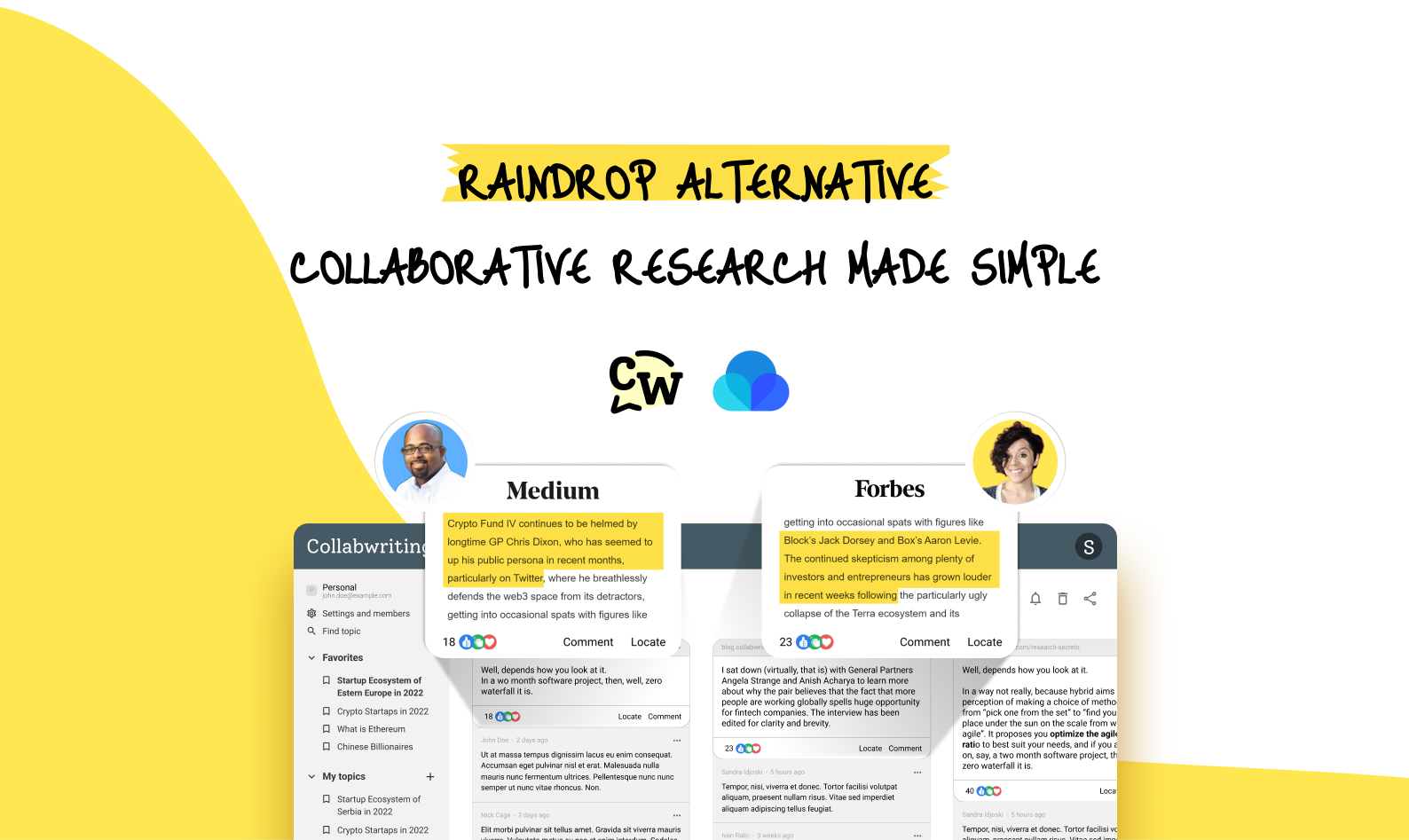Did you know that nearly 80% of businesses use marketing research to gain valuable insights into their performance, customers, industry, and competition?
Market or marketing research offers many benefits, but it can be tricky to know what kind of research to do and when to do it to get accurate and useful data for your business decisions.
To help you navigate this, we’re breaking down the basics of marketing research with examples.
Keep in mind that there is a wide range of marketing research types, and we will focus on the most important ones.
The basics of marketing research
Marketing research is the process of gathering, analyzing, and understanding information about a certain market, including insights about the target audience, competitors, and industry trends.
Its main role is to help you make smart decisions, whether they relate to product development, marketing strategies, or overall business growth.
Understanding the benefits of marketing research
With marketing research, you can learn just about anything you need to know. The best part is, that you can tailor your research to focus on the insights that matter most for your business.
Understand the market
- Discover and prioritize markets you should explore or enter.
- Create detailed profiles of your biggest competitors.
- Learn about market trends and factors that could affect your business.
Discover new opportunities
- Identify gaps in the market where there’s demand but little competition.
- Spot emerging trends and innovations that you can leverage for future growth.
- Recognize potential partnerships or collaborations that can help you expand.
Test ideas before launching
- Test new product concepts, marketing campaigns, or branding ideas before investing heavily.
- Gather feedback on prototypes or beta versions to refine them before the official launch.
- Measure potential customer reactions and the likelihood of success in the market.
Optimize products and services
- Generate new product ideas or improve existing ones.
- Develop a pricing strategy that works.
- Understand how customers view and use your products or services.
- Identify any gaps in sales or service, and uncover unmet customer needs.
Strengthen brand strategy
- Measure the strength of your brand and how it compares to others.
- Track and improve your brand health over time.
- Evaluate your marketing and sales strategies to ensure they meet customer needs.
Understand customers
- Get to know the needs and preferences of your target customers.
- Identify key parts of the customer experience, including pain points and satisfaction levels.
- Segment customers based on behaviors, attitudes, demographics, and interests to better target them.
Market or marketing research will help you in almost any aspect of your business, whether you need a clear view of your industry, customers, or competitors.
Signs you might need marketing research
With so many insights available, it can be tough to know where to start.
To determine which type of marketing research you need, think about your business priorities and whether new data or insights could help you achieve your goals.
Consider these questions:
Is the data I’m using current and comprehensive?
Are there areas where I feel uncertain or need more clarity?
Do I understand my customers, competitors, and market trends well enough?
Are there untapped opportunities or potential risks I haven’t explored yet?
If you’re unsure about any of these, marketing research can help fill the gaps and provide the fresh insights you need to move forward confidently.

The most effective market research methods
Before we dive into the most effective market research methods, it’s important to remember that the right method depends on what you want to learn.
Whether you're looking to understand your customers, test new ideas, or track trends in your industry, picking the right approach is key to getting valuable data.
In this section, we’ll go over some of the most effective methods, and show you how they can work for your business.
Primary research
Primary marketing research is original research done when a company needs specific, up-to-date data that affects its success or future.
A business analyst or market research team can collect this data internally, or the company can outsource it to a specialist provider like an agency or consultancy. Although outsourcing primary research may cost more upfront, it’s faster and brings benefits like expert knowledge and an unbiased perspective.
Primary research provides fresh, reliable data directly from trusted sources on the topic you're interested in. However, gathering this data takes more time compared to finding secondary data through online searches or library visits.
Primary research involves two main types of data collection:
- Exploratory research: Companies use this when they need to understand a problem that’s not clearly defined. For example, a company might explore the reasons behind declining sales by conducting interviews, surveys, or focus groups to gather insights.
- Conclusive research: Companies carry out this research to solve a problem identified through exploratory research or other data. For instance, if exploratory research reveals customer dissatisfaction, conclusive research will dig deeper to uncover the specific issues causing the dissatisfaction. By conducting primary research like this, the company can take targeted actions to improve the customer experience.
There are several types of primary research, and you’re likely already familiar with them. Your choice will depend on your budget, time limits, research goals, and whether you're looking for numbers or deeper insights.
- Surveys
- Focus groups
- Questionnaires
- One-on-one interviews
- Observation
Online surveys are a good fit if you’re looking to collect large volumes of data that can then be quantified. The interviews on the other hand can help you take a deep dive into the opinions and challenges of your target audience. They can’t be easily quantified, but are a good starting point if you’re starting from scratch.

Secondary research
Secondary research involves using information that others have already gathered before your study.
It’s usually the first step in any research project because it helps you see if someone has already explored a similar topic, providing a solid foundation for your own research.
Secondary research is cost-effective, as much of the information is available online.
Even if your initial search doesn't find a study that exactly matches your research goals, it still helps you build your knowledge. This can refine your research hypothesis and help you discover new market gaps.
One useful tip during online research is to highlight key points and leave notes on existing sources. This makes it easier for you to track important information and ensures that anyone working with you on the research project can quickly understand your insights. It also helps keep everything organized for future reference.
You can find relevant information from many sources, such as:
- Industry reports
- Books and magazines
- White papers
- Government reports and studies
- Reviews of competitors’ products/services
- Recently published research on relevant topics
- Scholarly journals, often available in reference libraries
Example of secondary research:
Imagine you're researching a competitor's product lineup to get a sense of how they’re positioning themselves in the market. You come across several reviews of their products across different websites. As you read through them, you highlight customer satisfaction points and leave comments on any recurring concerns, like pricing or specific features. This helps you and your team quickly spot areas where you could improve your own products and stay competitive.
Most businesses conduct multiple market research projects a year depending on their needs and resources. Over 80% of companies conduct market research frequently, and 79% conduct at least five market research projects a year.
Qualitative marketing research
Qualitative marketing research focuses on gathering non-numerical data, which is harder to measure but offers valuable insights. It provides a deeper understanding of people's thoughts, feelings, and behaviors.
Rather than looking for exact answers, qualitative research helps summarize and interpret what’s happening.
It relies on focus groups, in-depth interviews, and other techniques, usually with a small but carefully chosen sample size.
A small sample size saves costs, and not having a fixed questionnaire encourages free, in-depth discussions. The interviewer or researcher usually guides the conversation.
Simple, direct questions are often used, which prompt straightforward answers.
Example of qualitative marketing research:
Let’s say a tech company is developing a new app aimed at improving productivity for remote workers. Instead of only looking at usage statistics, they decide to conduct in-depth user interviews with a small group of remote workers.
During these interviews, users are asked to describe their daily routines, challenges, and how they currently use productivity tools. Some users may explain that they struggle with task prioritization and would like more intuitive reminders. Others might share that they value simplicity and don’t want an app that’s too cluttered with features.
The company then uses these insights to adjust the app’s design, add new features like customizable notifications, and remove unnecessary ones to keep it user-friendly.
This type of qualitative research helps the company understand user needs on a deeper level and make changes that will resonate with their target audience.
Quantitative marketing research
Quantitative market research focuses on collecting numerical data through surveys, polls, and questionnaires. It’s ideal when you need specific, detailed information about your company, market, or target customers.
This type of research answers questions like:
- Who is using your product?
- When do they use it?
- How many people are interested?
- How often do they make a purchase?
These questions aim to gather measurable, factual data, rather than broad or general insights.
Example of quantitative marketing research:
A tech company is launching a new fitness-tracking app and wants to understand how different age groups are using it. They send out a survey asking questions like:
"How many times per week do you use the app?"
"Which features do you use the most?"
"How satisfied are you with the app on a scale of 1-10?"
The company collects responses from hundreds of users and analyzes the data to understand usage patterns, customer preferences, and satisfaction levels. They can then identify which features are most popular, how often people use the app, and which age groups are most engaged.
This clear, numerical data helps them make informed decisions about how to improve the app or target their marketing efforts.
Marketing segmentation research
Market segmentation research helps you divide your target market into smaller, more specific groups based on shared characteristics. This allows you to create marketing strategies, products, or services that are tailored to each group’s unique needs.
Why is this type of research useful?
By understanding the different segments within your market, you can personalize your approach, making your campaigns more relevant and effective.
Types of segmentation
Segmentation can be based on factors like demographics, behavior, interests, or location.
Demographic segmentation: Grouping people based on characteristics like age, gender, income, or education.
Example: A clothing brand might design separate collections for teenagers, young professionals, and families based on their age and lifestyle.
Geographic segmentation: Dividing the market based on location, such as countries, regions, or cities.
Example: A restaurant chain may offer different menu items based on local tastes or weather (e.g., hot drinks in colder climates).
Behavioral segmentation: Grouping customers based on how they use products or interact with a brand, like purchase habits or brand loyalty.
Example: An online store might target regular buyers with loyalty rewards and offer discounts to first-time customers.
Psychographic segmentation: Dividing the market based on interests, lifestyles, values, or personality traits.
Example: A fitness brand could target customers who care about health with wellness-focused products while promoting convenience to busy individuals.
Market segmentation research helps you understand the unique needs of different groups, so you can create products, services, and marketing campaigns that resonate with each one, leading to better customer satisfaction and higher sales.
Product testing and development research
Product testing and development research helps you understand how customers feel about your product or service and how it performs in real-world situations.
By collecting feedback early, you can improve your product before it’s launched, saving both time and money.
This research often involves testing prototypes or new features with a sample of your target audience. The goal is to see how users interact with your product, find any issues, and get insights to make improvements.
Whether it’s a new product or an updated feature, product testing ensures that what you offer aligns with what customers want.
Customer marketing research
Customer market research explores what motivates your target customers and how your company can adapt to increase sales.
The goal is to gain a deep understanding of your customers and keep learning about their experiences and interactions with your company.
This research includes:
- Customer satisfaction research: This helps you understand what makes customers happy and how satisfied they are with your products or services. Happier customers are more likely to remain loyal and recommend your company to others.
- Customer loyalty research: This examines the experiences that build stronger customer loyalty. By identifying what keeps customers coming back, you can improve their journey and increase retention.
- Customer segmentation research: This helps you identify your customer base, including their behaviors, preferences, and common traits. Understanding your customers on a deeper level allows you to create more personalized and effective marketing strategies.
Additional benefits of customer market research include:
- Personalization: By understanding what your customers like and what challenges they face, you can adjust your marketing, products, and communication to better meet their needs. This makes your offerings more relevant to them, creating a more personalized experience.
- Customer journey mapping: Research helps you track the entire path your customers take when interacting with your brand. By mapping this journey, you can spot areas for improvement, eliminate any obstacles they face, and improve their overall experience with your brand.
- Market-driven innovation: By gaining insights directly from your customers, you can develop new features, products, or services that are better aligned with what they really want. This keeps you ahead of the competition and ensures you’re always meeting their needs.
With continuous customer market research, you can remain agile, adjust your strategies based on feedback, and strengthen your relationships with customers.
Brand awareness and perception research
Brand awareness and perception research helps you understand how people see your brand and how easily they recognize it. It shows whether your brand is standing out in the market and if people associate it with the right qualities.
This kind of research helps you see if your branding efforts are working and where you can improve.
Additionally, it allows you to gauge the effectiveness of your marketing campaigns, understand how your brand compares to competitors, and identify any misconceptions about your brand.
You can also use this research to refine your messaging, align your brand with customer values, and boost customer loyalty by creating stronger connections with your audience.
Combining marketing research methods for better insights
Marketing research is key to understanding your customers, competitors, and market trends. When you mix different research methods, you get a more complete view of your business, which helps you make smarter decisions.
And here's how you can mix various methods to get the most valuable insights:
Start with secondary and primary research
Begin with secondary research to gather existing information about your market and competitors. This gives you a solid foundation. Then, dive into primary research, like surveys or focus groups, to get fresh insights directly from your customers.
Combining these methods helps you back up your findings with real-time data.
Balance qualitative and quantitative research
Qualitative research gives you a deeper understanding of why customers behave the way they do, while quantitative research provides hard numbers, like satisfaction scores or purchase habits.
By using both, you can understand not just what’s happening but also why it’s happening.
For example, qualitative interviews might show why a feature frustrates customers, and quantitative surveys tell you how many customers are affected.
Combine customer segmentation and journey mapping
Use customer segmentation to divide your audience into smaller, more specific groups based on things like age, interests, or buying habits. Then, map their customer journey to understand their experiences with your brand.
This helps you personalize your marketing and product offerings, so they resonate better with each group.
Link product testing with brand awareness research
Conduct product testing to get feedback on new products or features, and pair it with brand awareness research to see how your brand is perceived.
Together, these insights help you improve both your product and how it’s marketed, ensuring it fits your customers' needs and expectations.
Keep improving with ongoing research
Marketing research is an ongoing process. By continuously gathering customer satisfaction and loyalty research, you can adapt to your customers' changing needs.
This helps you build stronger relationships with customers and stay competitive in the market.
By combining these methods, you’ll get a well-rounded understanding of your market, which helps you improve your offerings and grow your business more effectively.

Conclusion
Combining research methods is key to getting a complete and accurate understanding of your business.
Testing, testing, and testing again is essential to ensure that your decisions are based on solid data and insights.
No strategy or approach is ever perfect, and what works today might not be as effective tomorrow. Staying open to new information and continually testing is crucial if you want to stay relevant and keep resonating with your audience over time.
To stay on track, research should be a continuous part of your process. Alongside planning, execution, and revision, make research a regular step in each iteration. Keep an eye on industry shifts and customer feedback to ensure your actions are always aligned with your goals.
Remember, both your strategy and your audience evolve. Let your approach adapt to the changes needed for long-term success.

Collabwriting - Shareable Notes on Web Pages and PDFs
Collabwriting allows you to gather all your online sources in one place. Just highlight, save, and collaborate with anyone on any content you find online.
Why is marketing research important for my business?
Marketing research helps you make smarter decisions. Whether you want to improve your products, understand your customers better, or spot new opportunities, research gives you the insights you need to succeed.
What’s the difference between primary and secondary research?
Primary research involves collecting new, first-hand data, such as surveys or interviews. Secondary research is about using existing data from reports, studies, or articles. Both types help you learn more, but primary research is more specific and up-to-date.
How do I know which type of research my business needs?
Think about your business goals and what information you need. If you're unsure, ask yourself: Do I need fresh data? Am I exploring a new market or product? Research helps fill in the gaps and guide your decisions.
How often should I conduct marketing research?
It’s a good idea to make research a regular part of your business strategy. Whether you do it monthly, quarterly, or annually depends on your needs. Continuous research keeps you updated on changes in your market and customer preferences.
What are some common challenges in marketing research?
Some challenges include gathering accurate data, reaching the right audience, or interpreting complex results. However, with careful planning and choosing the right methods, you can overcome these obstacles to get valuable insights.







![5 Tools Marketers Use to Organize Research - Compared [2025]](/content/images/2025/11/cover-4-1.png)

![Build Credibility in Research: Smart Way to Verify Information and Track Sources Easily [2025]](/content/images/2025/10/covers-for-blog--7--1.png)

![How Marketers Can Turn LinkedIn Content into Collaborative Research [2025]](/content/images/2025/10/covers-for-blog--8-.png)
![Best Readwise Alternative for Personal & Team Research [2025]](/content/images/2025/09/Frame-814--3-.png)


